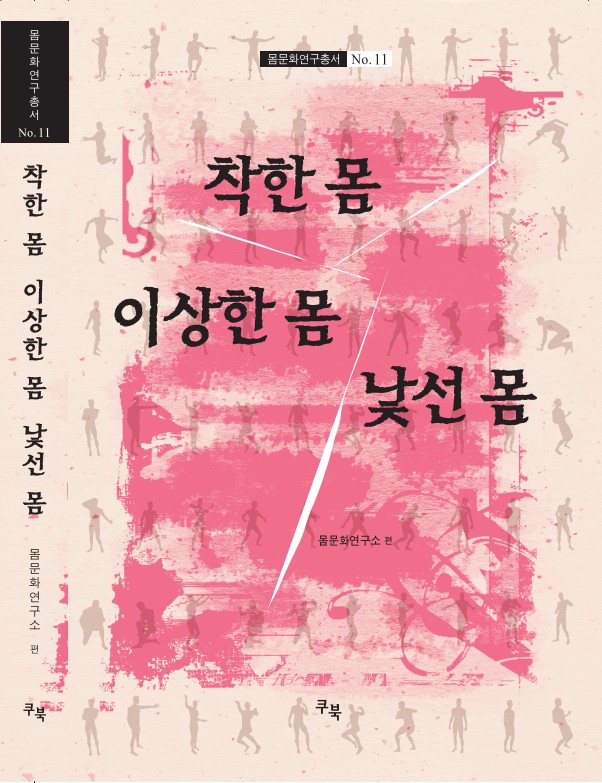fnctId=bbs,fnctNo=1279
- 글번호
- 910361
Unfamiliar, Glamorous, and Virtuous Boides
- Writer
- 몸문화연구소
- View
- 98
- Date
- 2019.06.13
- 수정일
- 2024.02.13

Series Book - Unfamiliar, Glamorous, and Virtuous Bodies
In our lives, we don't look at our own body or the bodies of others in a neutral perspective, and
we even have a normative thinking on what the body should be like. If we, however, ever step
outside of the scope of such an idea, our bodies then tend to be stigmatized as something strange
or unfamiliar. Yet what is truly strange or unfamiliar is such a justifiable request for the body: To put
it in another way, there is no such thing as a body that must follow certain norms or criteria.
In our lives, we don't look at our own body or the bodies of others in a neutral perspective, and
we even have a normative thinking on what the body should be like. If we, however, ever step
outside of the scope of such an idea, our bodies then tend to be stigmatized as something strange
or unfamiliar. Yet what is truly strange or unfamiliar is such a justifiable request for the body: To put
it in another way, there is no such thing as a body that must follow certain norms or criteria.
Unfamiliar, Glamorous, and Virtuous Bodies is divided into four parts, each discussing the body as a
'festival of diversity' and as a resistance to the dictatorship of 'lookism'. In the first part, we begin
the whole discussion by clearly defining the concept of lookism, and then trace the cultural and
social background in which lookism was born. After that, we will discuss the following subjects
regarding appearance and body: on-going issues regarding what we refer to as “appearance capital”,
the gender, the youth subjects (as individuals), and so on. Part 2 is based on the keyword ‘posthuman’,
further exploring each of the following items: posthuman as a prosperous new form of life, artificial
intelligence seen through an ontological approach such as life and spirit, and an extension of future body
described via the narratives of science fiction. In the third part, the issue of hospitality for refugees
in Korean society is fully addressed, and then the issue of national shame is questioned in-depth by
looking into the Sewol Ferry Incident and the historical issues regarding Japanese Military Sexual Slavery.
Lastly, Part 4 depicts the process of voicing as a feminist within a 'male-centered society' where
masculine-speaking is prevalent. The chapter then analyzes the recently appeared “young-young feminists”,
in particular focusing on the current conflict within feminism.
